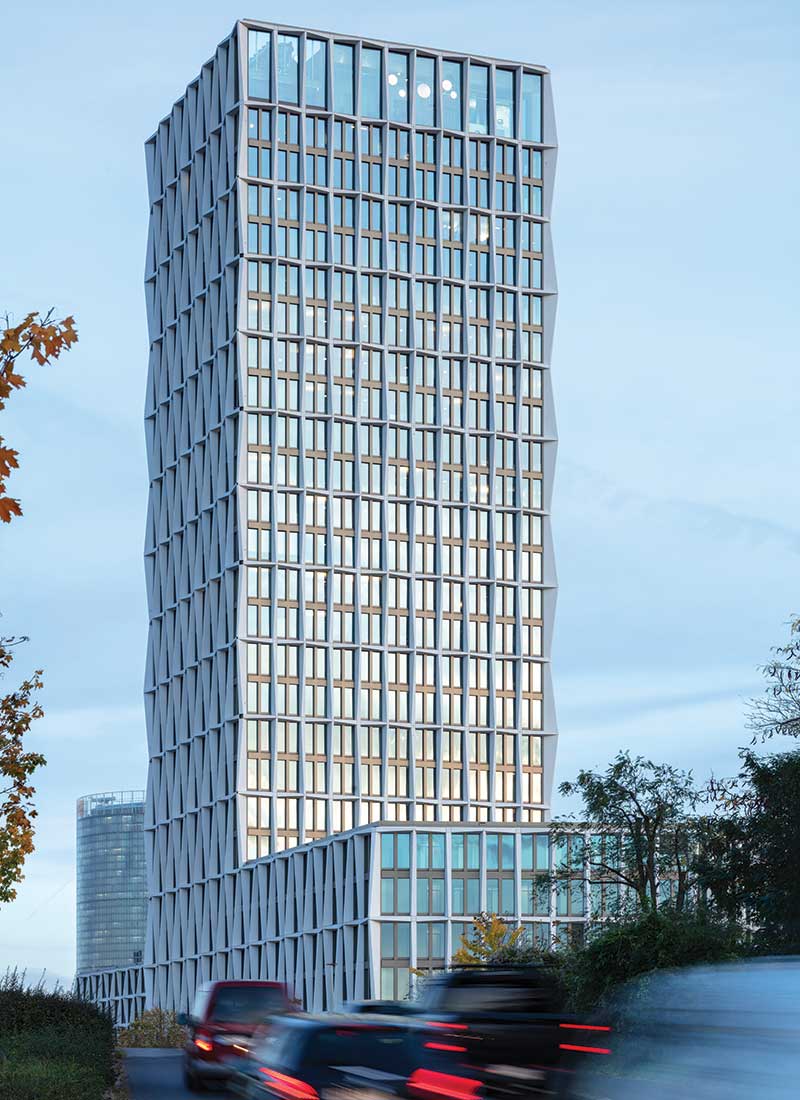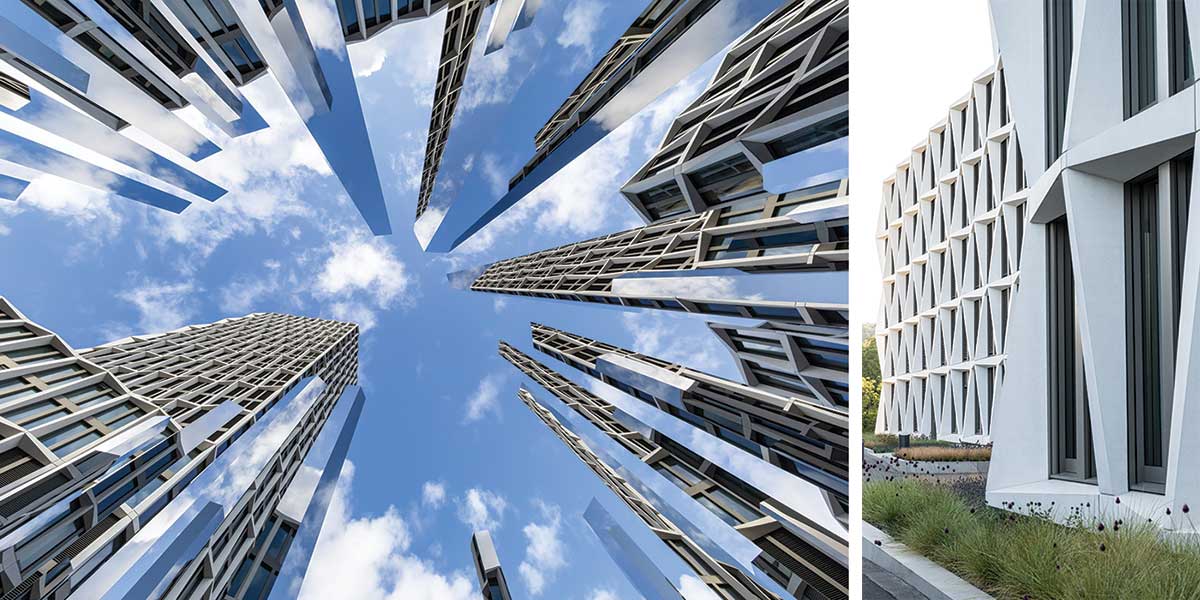Fact File
Program: Offices, Restaurant, Event LocationLocation: Bonn, Germany
Client: Art-Invest Real Estate, Cologne
Site: 15,300 sqm
High rise: 28 floors, Height:101,5 meters
Rental space: 66,000 sqm
Office workstations: 4500
Seating Gastronomy: 600
Underground parking spaces: 950
Bike parking spaces: 450
Architecture: JSWD, 1st prize competition 2015
Completion: 2023
Photos: Christa Lachenmaier, HG Esch
Source: V2com

With their irregular layout, three new buildings nestle into the corners of the triangular plot. This creates an outdoor public space in the middle that people can freely walk through, thereby establishing a connection to the neighboring residential area. The new city square opens up towards the Rhine River and the UN district, and the prestigious addresses of the office buildings and their equally impressive driveways are also located here. Danish artist Jeppe Hein created an open, spiral-shaped installation entitled “Mirror Pavilion” specifically for the center of the Neue Kanzlerplatz. With 28 storeys and more than 100 vertical meters, the new high-rise anchors an office complex within the city skyline. In respect to urban planning, of particular note is that the project eliminated the “barrier” created by the previous building – the long-empty 18-storey Bonn Center, which for nearly 50 years, characterized the urban landscape, blocking paths and obstructing views.
With its flexible and versatile working environments, the campus offers space for interdisciplinary communication and encounters, while restaurants and cafés provide added value to both the office workers and the residents of the surrounding neighborhood.
Spatial efficiency and support structures in the facade
In Buildings 2 and 3 (5 to 7 storeyes), the white facade grid is comprised of load-bearing precast concrete elements. This allows the depth of the elements to be utilized constructively, while ensuring the offices are kept free of columns or supports projecting into the interior.
In the high-rise, a load bearing reinforced concrete skeleton is integrated into the glass surface. The geometry of the external facade structure was created with the help of insulated facing panels of fiberglass-reinforced concrete.
The concrete facade only extends behind the glass fronts in the foyers of the three buildings. The facade concept also continues in the interior: the cladding on the ceiling and rear wall is also made up of triangular fiberglass-reinforced concrete elements. In the three-storey foyer of the high-rise, these elements are up to 11 meters long. Here, four slender hinged supports bear the load of the upper storeys that project up over the foyer, thereby seeming to float above it.

Facade: coordinated concrete formulations and a lively geometry
The facade grid is made of cream-white, acidified architectural concrete with a double-layer hydrophobic coating. Its design connects all three buildings to create a harmonious ensemble, while at the same time minimizing the use of formal means. In the high rise – as opposed to the other two buildings – the facade panels extend over two storeys around the base of the high-rise, and actually span three. This feature emphasizes the building’s height. By reconciling the different concrete formulations, it was possible to create an identical surface appearance despite the different construction methods and the fact that the load-bearing facade supports and non-load-bearing facing panels were constructed at different times.
Sustainability aspects
Numerous sustainability aspects were considered during the project’s planning phase. All three buildings have green roofs, and a photovoltaic system. The buildings are heated with district heating and concrete core tempering. The external solar protection is controlled automatically, while the sunshade louvers have a light-diffusing function. The integrated daylight and artificial lighting planning resulted in the use of presence detectors inside the building and the automatic adjustment of the lighting levels based on the ambient brightness. Further elements that increase the building’s efficiency include the use of LED lighting, water-saving fixtures, and a ventilation system with waste heat recovery. The use of renewable and locally sourced raw materials was also taken into consideration. All the buildings were pre-certified LEED Gold.















